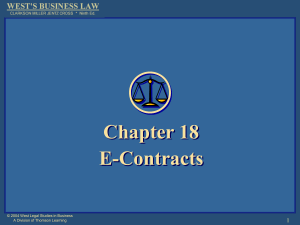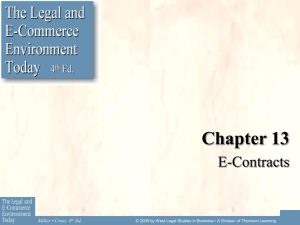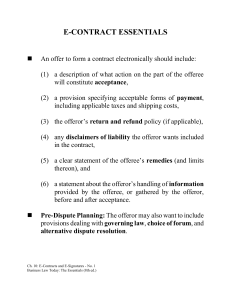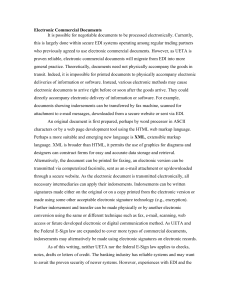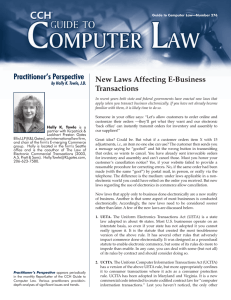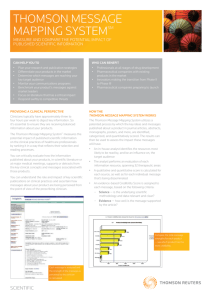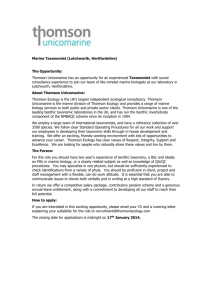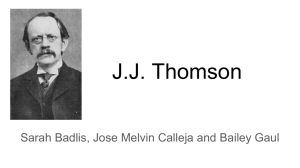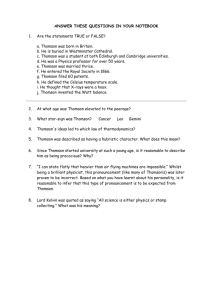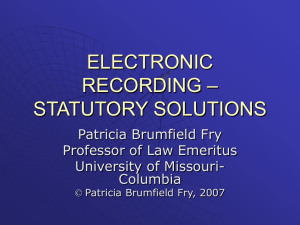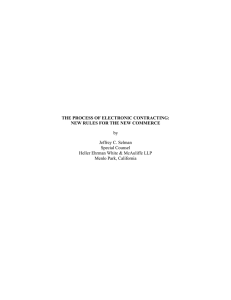Business Law Today Essentials 8th Edition 2008
advertisement
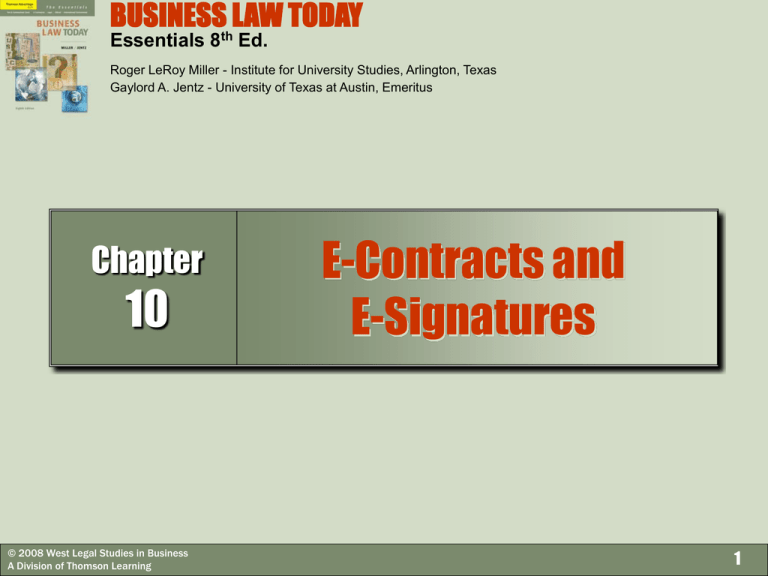
BUSINESSthLAW TODAY Essentials 8 Ed. Roger LeRoy Miller - Institute for University Studies, Arlington, Texas Gaylord A. Jentz - University of Texas at Austin, Emeritus Chapter 10 © 2008 West Legal Studies in Business A Division of Thomson Learning E-Contracts and E-Signatures 1 Learning Objectives What are some important clauses to include when making offers to form electronic contracts (or e-contracts)? How do shrink wrap and click-on agreements differ from other contracts? How have traditional laws been applied to these agreements? What is an electronic signature? Are electronic signatures valid? What is a partnering agreement? What purpose does it serve? What is the UETA? What are some of the major provisions of this act? © 2008 West Legal Studies in Business A Division of Thomson Learning 2 Forming Contracts Online Online Offers should include: Remedies for Buyer. Statute of Limitations. What constitutes Buyer’s acceptance. Method of Payment. Seller’s Refund and Return Policies. Disclaimers of Liability. How Seller will Use Buyer’s Information (Privacy). © 2008 West Legal Studies in Business A Division of Thomson Learning 3 Provisions to Include Dispute Settlement Provisions. Choice of Law. Choice of Forum. E-Bay uses online dispute resolution. Displaying the Offer (via hyperlink). How Offer Will Be Accepted. Amazon.com--Checkout. “I Accept” Button to Click. © 2008 West Legal Studies in Business A Division of Thomson Learning 4 Click-On Agreements CASE 10.1 Mortgage Plus, Inc. v. DocMagic, Inc. (2004). © 2008 West Legal Studies in Business A Division of Thomson Learning 5 Online Acceptances Shrink-Wrap Agreements. Contract terms are inside the box. Party opening box agrees to terms by keeping merchandise. Enforceable Contract Terms. (UCC 2204). Additional Terms. © 2008 West Legal Studies in Business A Division of Thomson Learning 6 Online Acceptances Click-On Agreements occur when Buyer “checks out” or clicks on “I Accept” button on Seller’s website or when software is installed. Browse-Wrap Terms. CASE 10.2 Specht v. Netscape Communications (2002). © 2008 West Legal Studies in Business A Division of Thomson Learning 7 E-Signatures E-Signature Technologies. Asymmetric Cryptosystem. Cyber Notary. State Law Governing E-Signatures. Uniform Electronic Transactions Act (1999). Federal Law. E-SIGN (2000) gives e-signatures and edocuments legal force. CASE 10.3 Amber Chemical, Inc. v. Reilly Industries, Inc. (2007). © 2008 West Legal Studies in Business A Division of Thomson Learning 8 UETA Purpose is to remove barriers to forming electronic commerce. E-Signature is “electronic sound, symbol or process…associated with a record and… adopted by a person with intent to sign the record.” UETA applies only to e-records and esignatures relating to a transaction. © 2008 West Legal Studies in Business A Division of Thomson Learning 9 UETA and E-SIGN E-SIGN explicitly refers to UETA. Provides that E-SIGN is pre-empted by state passing of UETA. But state law must conform to minimum E-SIGN procedures. © 2008 West Legal Studies in Business A Division of Thomson Learning 10 Highlights of UETA Parties must agree to conduct transactions Electronically. A party can “opt out” of UETA terms. Attribution—process to ensure person sending an electronic record is in fact the real person. Electronic Errors. “E-Mailbox” Rules. Dispatched when leaves control of sender. Received when enters recipient’s processing system. © 2008 West Legal Studies in Business A Division of Thomson Learning 11 UETA Summary © 2008 West Legal Studies in Business A Division of Thomson Learning 12
